Classic Toddler Milk
800g | 12+ months


Classic Toddler Milk
800g | 12+ months | €16.95 per can
We’re 100% European and don’t do palm oil, fish oil or other cheap additives. What we do do is locally-sourced full cream milk, plant-based DHA and 3’-GL. Simple.
Our Toddler Milk is veggie-friendly and suitable from twelve months.

Whole Milk
Kendamil uniquely uses whole milk as a source of fat

No Palm Oil
Kendamil has and will NEVER used Palm Oil

Plant-Based DHA
Kendamil sources Omega 3 from plants!

Vegetarian
Kendamil is uniquely Veggie friendly!
preparation
For feeding your baby, add 1 level scoop of powder to each 30 ml of water (freshly boiled and cooled). Please refer to the feeding guide shown below and note this table should only be used as a guide. All babies are different and may require more or less than is shown. Kendamil Toddler Milk should be fed on demand. If you need more advice talk to your healthcare professional.
1 level scoop = 4.6g * Amount of freshly boiled and cooled water
| Water per feed | Scoops per feed |
| 180ml | 6 |
Snap open tamper-proof clip and dispose of immediately and safely, away from children. Hold the top of the can with both hands, place both thumbs under the lip and push up to open. The scoop is held inside the lid. Open the foil seal by pulling back on easy open tab carefully and safely, then dispose of foil.
Step 1
Wash hands, then sterilise your feeding utensils according to manufacturer’s instructions.
Step 2
Fill kettle with 1 litre of freshly run tap water (do not used repeatedly boiled water). Boil and leave to cool for 30 minutes, so it remains at the temperature of at least 70℃. Measure the required water into a sterilised bottle.
Step 3
Using the scoop provided, add the correct number of levelled scoops to the bottle. Use the straight edge inside the lid to level each scoop.
Step 4
Place on a sterilised teat and cap on the bottle and shake well to dissolve powder.
Step 5
Cool to a natural body temperature by running the bottle (lid on) under cold running water. Always test the temperature of the formula on the inside of your wrist.
nutritional values |
|||
|---|---|---|---|
|
Energy |
kJ kcal |
1976 471 |
271 65 |
|
Fat of which: - saturates - unsaturates |
g g g |
20.4 9.3 11.1 |
2.8 1.3 1.5 |
|
Omega 3 α-Linolenic Acid (ALA) Docosahexaenoic Acid (DHA) |
mg mg |
260 62 |
35.6 8.5 |
|
Omega 6 Linoleic Acid (LA) Arachidonic Acid (ARA - LCP) Total Carbohydrate of which sugars * of which lactose Fibre of which Galacto-oligosaccharides of which Fructo-oligosaccharides of which 3’GL** Protein (N x 6.25) Salt |
mg mg g g g g g g g g g |
2600 16 58 54 53 1.66 1.45 0.16 0.05 13 0.42 |
356 2.2 8 7.4 7.3 0.23 0.2 0.02 0.01 1.8 0.06 |
|
Vitamins Vitamin A Vitamin D3 Vitamin E Vitamin K Vitamin C Thiamin Riboflavin Niacin Vitamin B6 Folic Acid Vitamin B12 Pantothenic Acid Biotin |
mcg-RE mcg mg-α-TE mcg mg mg mg mg mg mcg mcg mg mcg |
450 5.4 9 27 86 0.52 0.86 5.2 0.32 100 1.3 3.2 13 |
62 (15%*) 0.7 (10%*) 1.2 (24%*) 3.7 (31%*) 12 (27%*) 0.07 (14%*) 0.12 (17%*) 0.71 (10%*) 0.04 (6%*) 14 (18%*) 0.2 (25%*) 0.44 (15%*) 1.8 (18%*) |
|
Minerals Sodium Potassium Chloride Calcium Phosphorous Magnesium Iron Zinc Copper Iodine Selenium Manganese |
mg mg mg mg mg mg mg mg mcg mcg mcg mcg |
170 650 460 880 480 47 6.3 3.7 260 81 18 63 |
23 (6%*) 89 (9%*) 63 (13%*) 121 (22%*) 66 (12%*) 6.4 (8%*) 0.9 (11%*) 0.5 (10%*) 35 (7%*) 11 (14%*) 2.5 (13%*) 8.6 (0.07%*) |
|
Other L-Carnitine (naturally occurring) Nucleotides * & Labelling Reference Values ** Sugars derived from milk *** 3'GL Galactosyllactose |
mg mg |
6.8 20 |
0.9 2.8 |
key ingredients
Whole Milk, Skimmed Milk, Lactose (Milk), Vegetable Oils (Sunflower Oil, Coconut Oil, Rapeseed Oil), Galacto-oligosaccha-rides (Milk), Less Than 2% Of: Calcium Phosphate, Potassium Hydroxide, Sodium Ascorbate (Vitamin C), Fructo-oligosaccharides, Oil from the Microalgae Schizochytrium Sp., Calcium Citrate, Iron Pyrophosphate, Oil from Mortierella Alpina, Nucleotides (Cytidine-5'-Monophosphate, Disodium Uridine-5'-Monophos-phate, Adenosine-5'-Monophosphate, Disodium Inosine-5'-Mono-phosphate, Disodium Guanosine-5'-Monophosphate), Vitamin E, Zinc Sulphate, Niacin, Calcium Pantothenate, Copper Sulphate, Vitamin A, Thiamin, Riboflavin, Vitamin B6, Folic Acid, Manganese Sulphate, Potassium lodide, Vitamin K, Sodium Selenite, Biotin, Vitamin D3, Vitamin B12, Antioxidant: Tocopherol-rich Extract.
Allergy Advice: For Allergens See Ingredients In Bold.
Kendamil a confrontoSiete curiosi di sapere come ci confrontiamo con le altre marche presenti sugli scaffali? Scoprite come siamo uguali e come siamo unici in un solo sguardo. |

Classic Toddler Milk |
|
|---|---|---|
|
|
||
|
|
||
|
|
||
|
|
||
|
|
Kendamil a confronto

Classic Toddler Milk
made in
carbohydrate source
whey:casein
fat source
approx. price per can
*Informazioni sui prezzi e sugli ingredienti tratte da Tesco.com. Laddove i prodotti non sono disponibili presso Tesco, il loro prezzo è stato determinato utilizzando amazon.co.uk del 03.04.2024.
See More Comparisons See More Comparisonstrova la tua formula perfetta
È facile come 1,2,3... Basta qualche domanda per trovare la formula perfetta per le esigenze della vostra famiglia.
Fai il Quiz
Ingredienti chiave
Ingredienti chiave
Ingredienti chiave
Whole Milk
Whole Milk is the first ingredient in each of our formula recipes and is what we’re known best for. Our whole milk is sourced from grass-fed cows on European farms and is rich in natural mammal’s milk fat. Our use of whole milk provides a naturally creamy taste to our recipe and crucially means we can use reduced levels of vegetable oils, which typically form 100% of the fat content in other formula brands. Our use of whole milk also means we have naturally present MFGM in our recipes.
Skim Milk
Skim Milk acts as a source of proteins, carbohydrate, and essential vitamins and minerals such as calcium and phosphorus which are important for bone health. The skim milk you’ll find in Kendamil comes from European farms and grass-fed cows.
Whey Protein
We add whey protein to our recipe to adjust the naturally high casein content of cow's milk, achieving a whey to casein ratio of approximately 40:60. This adjusted ratio more closely resembles the composition of breastmilk. Whey protein is more easily digestible than casein protein as it remains soluble in the acidic environment of the stomach, allowing it to be digested and absorbed quickly. Our source of whey protein is also rich in lactose, which is the most common carbohydrate (or ‘sugar’) found in breastmilk, providing energy to your little one.
Fat blend
Alongside the natural milk fat from our whole milk, we use a blend of infant-grade coconut, sunflower and rapeseed oil for our fat content. These oils are necessary to provide essential fatty acids (such as linoleic and alpha-linolenic acid) which are present in human milk and are the precursors for your baby to make long chain polyunsaturated fats like DHA. We can’t rely exclusively on our whole cow’s milk fats as these fatty acids are not present in sufficient quantities. We never include Palm Oil or Soybean Oil in our formula.
DHA
DHA (docosahexaenoic acid) is a type of omega-3 fatty acid which supports healthy brain and eye development. It is naturally found in breastmilk and plays a crucial role in the growth and function of an infant's nervous system. We source our DHA from sustainably farmed marine algae.
GOS & FOS
GOS (galacto-oligosaccharides) are dietary fibers added to infant formula to mimic the effects of prebiotics found in breastmilk. They promote the growth of beneficial gut bacteria which can lead to a healthier digestive system, softer stools, and potential immune system benefits. FOS (fructo-oligosaccharides) is our second form of dietary fiber. Like GOS, these prebiotic fibers work by feeding the beneficial bacteria in an infant's gut, promoting healthy digestion, softer stools, and potential immune support.
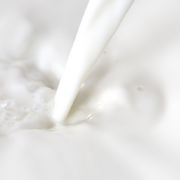
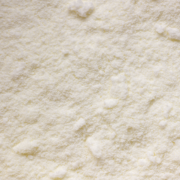
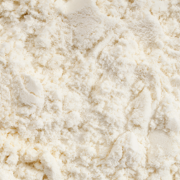
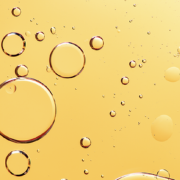
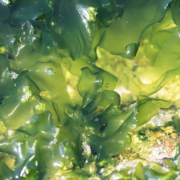
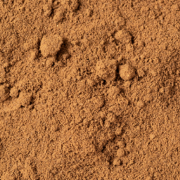

1. Whole Milk
Whole Milk is the first ingredient in each of our formula recipes and is what we’re known best for. Our whole milk is sourced from grass-fed cows on European farms and is rich in natural mammal’s milk fat. Our use of whole milk provides a naturally creamy taste to our recipe and crucially means we can use reduced levels of vegetable oils, which typically form 100% of the fat content in other formula brands. Our use of whole milk also means we have naturally present MFGM in our recipes.

2. Skim Milk
Skim Milk acts as a source of proteins, carbohydrate, and essential vitamins and minerals such as calcium and phosphorus which are important for bone health. The skim milk you’ll find in Kendamil comes from European farms and grass-fed cows.

3. Whey Protein
We add whey protein to our recipe to adjust the naturally high casein content of cow's milk, achieving a whey to casein ratio of approximately 40:60. This adjusted ratio more closely resembles the composition of breastmilk. Whey protein is more easily digestible than casein protein as it remains soluble in the acidic environment of the stomach, allowing it to be digested and absorbed quickly. Our source of whey protein is also rich in lactose, which is the most common carbohydrate (or ‘sugar’) found in breastmilk, providing energy to your little one.

4. Fat blend
Alongside the natural milk fat from our whole milk, we use a blend of infant-grade coconut, sunflower and rapeseed oil for our fat content. These oils are necessary to provide essential fatty acids (such as linoleic and alpha-linolenic acid) which are present in human milk and are the precursors for your baby to make long chain polyunsaturated fats like DHA. We can’t rely exclusively on our whole cow’s milk fats as these fatty acids are not present in sufficient quantities. We never include Palm Oil or Soybean Oil in our formula.

5. DHA
DHA (docosahexaenoic acid) is a type of omega-3 fatty acid which supports healthy brain and eye development. It is naturally found in breastmilk and plays a crucial role in the growth and function of an infant's nervous system. We source our DHA from sustainably farmed marine algae.

6. GOS & FOS
GOS (galacto-oligosaccharides) are dietary fibers added to infant formula to mimic the effects of prebiotics found in breastmilk. They promote the growth of beneficial gut bacteria which can lead to a healthier digestive system, softer stools, and potential immune system benefits. FOS (fructo-oligosaccharides) is our second form of dietary fiber. Like GOS, these prebiotic fibers work by feeding the beneficial bacteria in an infant's gut, promoting healthy digestion, softer stools, and potential immune support.

Liv

Beau

Arley

Hudson

Daphne

Avery
Liv adora questo porridge!
Liv adora questo porridge!
Liv adora questo porridge di Kendamil, ma anche io, perché è facilissimo da preparare e a volte è proprio quello che ci vuole per una mamma impegnata 😍🤝🏼
Beau ama assolutamente Kendamil
Beau ama assolutamente Kendamil
Beau segue il latte da qualche mese. Ama assolutamente Kendamil!
modo perfetto per la transizione
modo perfetto per la transizione
Con tutti gli ingredienti naturali, è il modo perfetto per far passare il bambino al latte successivo. È anche adatto ai vegetariani.
Hudson ama Kendamil
Hudson ama Kendamil
Possiamo dire che Hudson adora Kendamil! Ama anche il porridge 😋
un prodotto di provata efficacia
un prodotto di provata efficacia
Daphne è una ragazza da colazione e il porridge di banana Kendamil si sta rivelando un prodotto molto apprezzato.
Avery è una grande fan!
Avery è una grande fan!
Avery è una grande fan! Abbiamo provato altre formule in passato e non era entusiasta, ma adora kendamil. [È rassicurante sapere che abbiamo trovato un'alternativa con i migliori ingredienti di cui possiamo fidarci 😊🙌🏻
Kendamil is the trusted and best formula we have given to both our girls since birth, delivery of this product is great to ensure we never run out!
Kendamil is the trusted and best formula we have given to both our girls since birth, delivery of this product is great to ensure we never run out!
My order came earlier than expected! Happy Mother! Thank you Kendamil!
My order came earlier than expected! Happy Mother! Thank you Kendamil!
I put my son on kendamil about 2/3 months old, don’t know why I didn’t sooner best decision I ever made. He was so content and loved his bottles, still does to this Day and he’s 14 months.
Subscribe to our emails
Subscribe to our emails
Sei il primo a conoscere le nuove collezioni e le offerte esclusive.
Si prega di leggere il seguente avviso
La maggior parte dei professionisti della salute concorda sul fatto che l'allattamento al seno è preferibile a quello al biberon perché presenta molti benefici sia per voi che per il vostro bambino.
Se state pensando di abbandonare l'allattamento al seno o di combinare l'allattamento al seno con quello al biberon, vi consigliamo di parlarne prima con la vostra ostetrica o con l'assistente sanitaria. Una volta presa la decisione di interrompere l'allattamento al seno, potrebbe essere difficile tornare indietro. Anche l'allattamento parziale al biberon con un latte artificiale, soprattutto nelle prime settimane di vita, può ridurre l'apporto di latte materno.
Se si sceglie l'allattamento al biberon, è molto importante utilizzare un latte artificiale per tutto il primo anno di vita.
Assicuratevi di seguire molto attentamente tutte le istruzioni d'uso.







